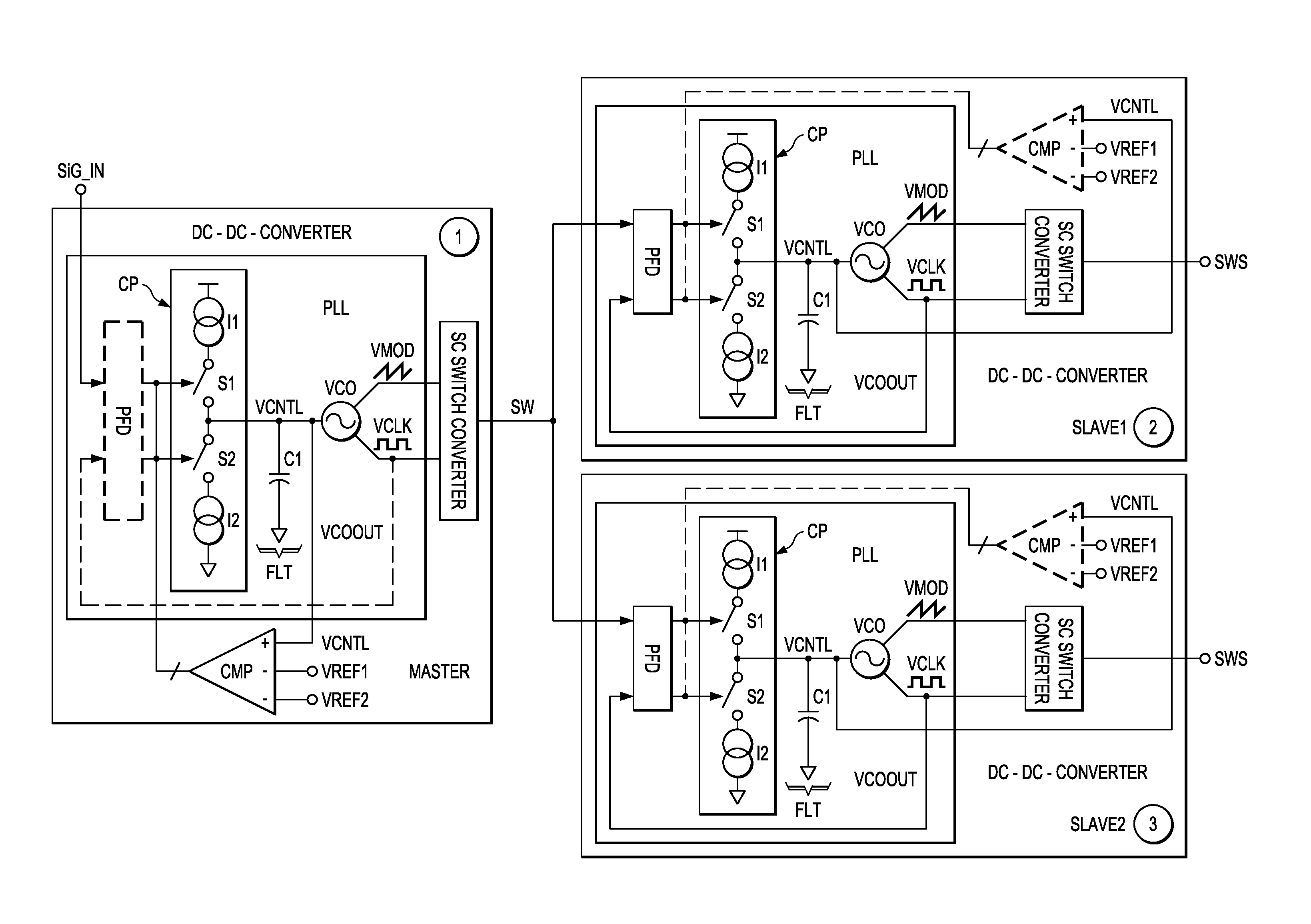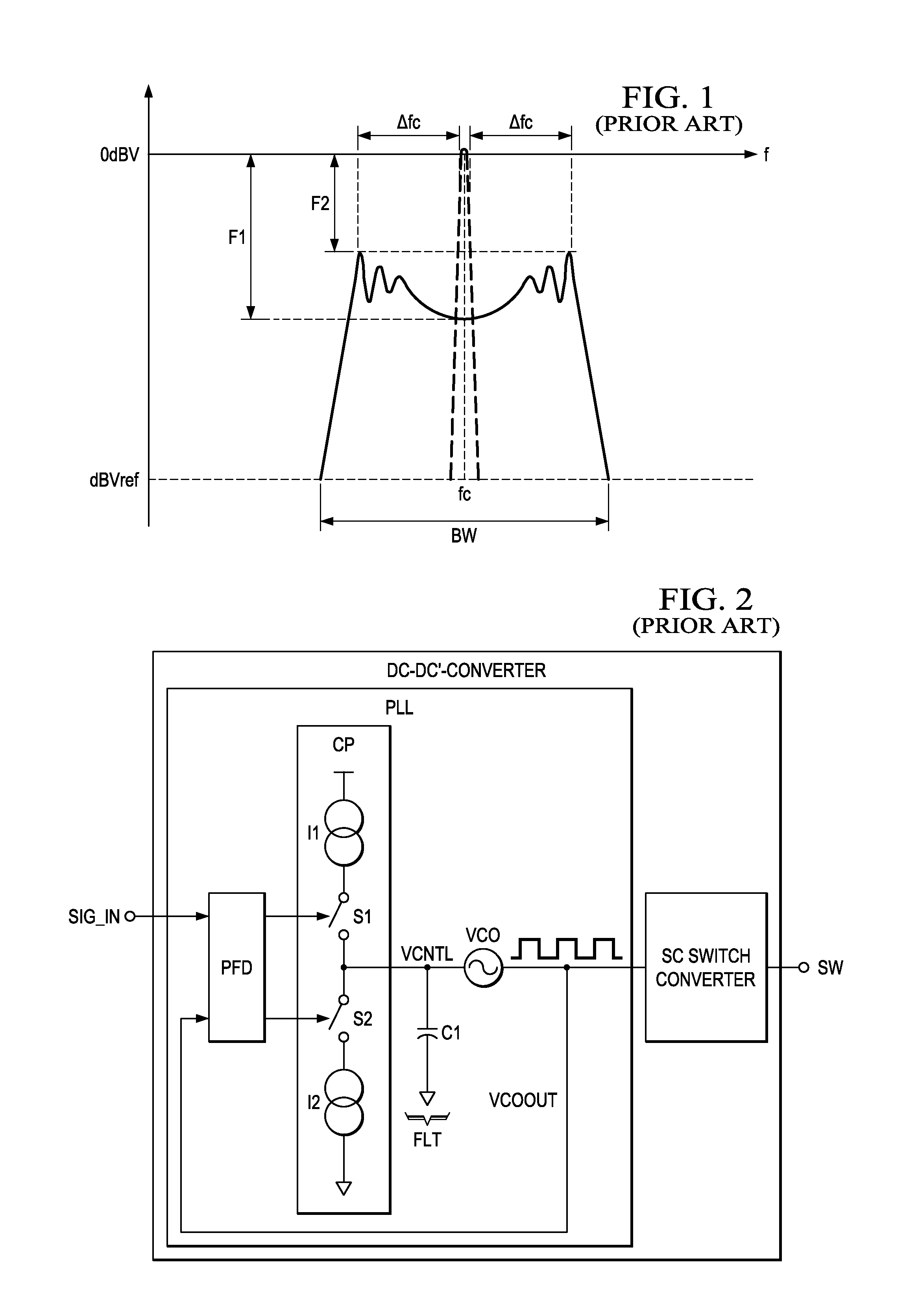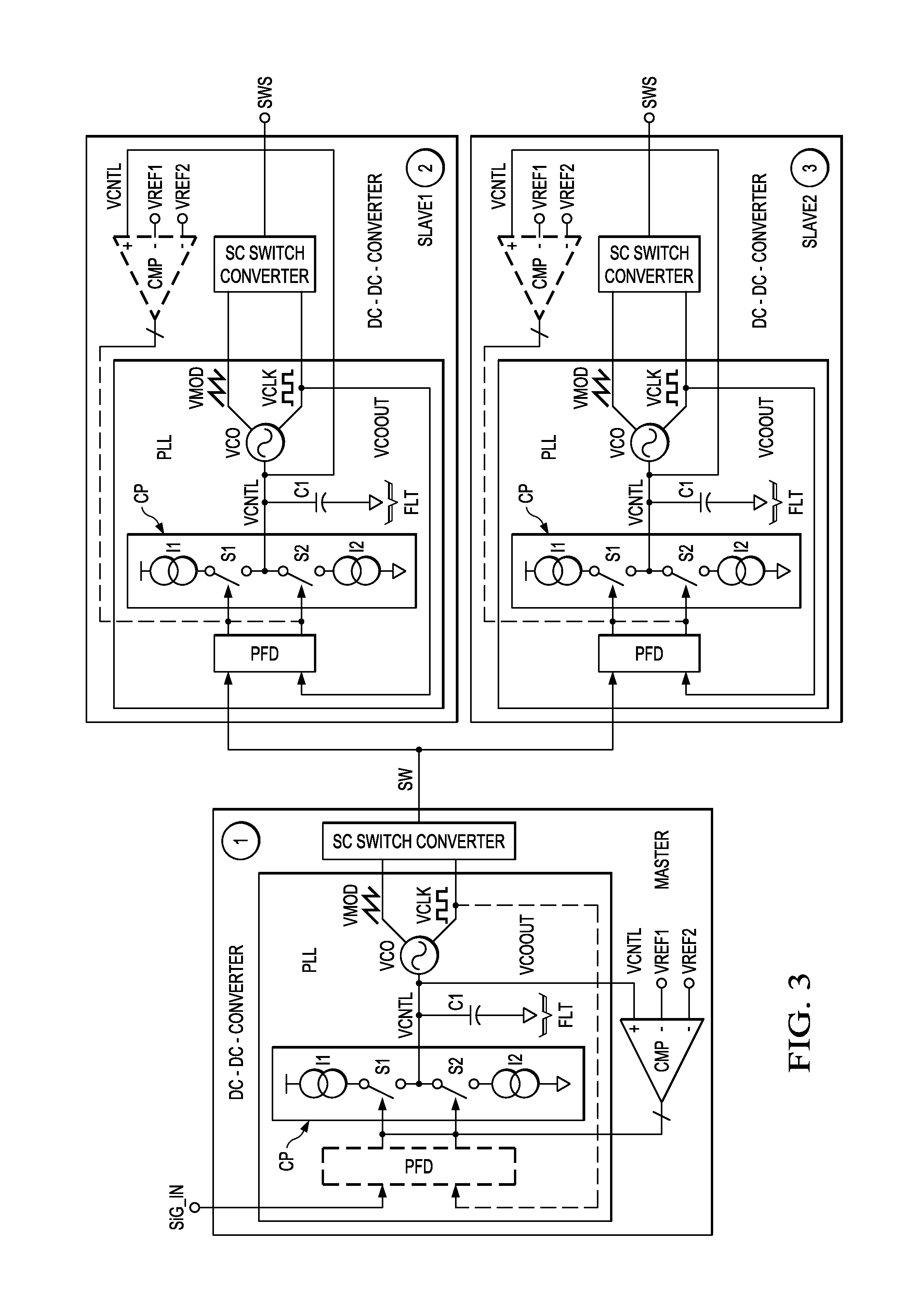Device and method for generating clock signals for DC-DC converters
a clock signal and converter technology, applied in the direction of automatic control, process and machine control, instruments, etc., can solve the problems of reducing the size of the required electronic circuit and the manufacturing cost of the electronic device, so as to achieve the effect of not occupying additional space on the circuit and without extra cos
- Summary
- Abstract
- Description
- Claims
- Application Information
AI Technical Summary
Benefits of technology
Problems solved by technology
Method used
Image
Examples
Embodiment Construction
[0023]FIG. 1 is a graphical representation based on a publication of Santolaria et al., EMI Reduction in Switched Power Converters by means of Spread Spectrum Modulation Techniques, 35th Annual IEEE Power Electronics Specialists Conference, pp. 292-296, Aachen, Germany. FIG. 1 shows the amplitude as a function of frequency of spread spectrum modulation of a signal having a carrier frequency fc. A non-modulated harmonic of the carrier frequency, centered about the carrier frequency fc, is shown as a dotted line, with a modulated signal, also centered about the carrier frequency fc and having side band harmonics, being shown as a solid line. The modulated signal has a bandwidth BW.
[0024]The modulation index mf is defined as
[0025]mf=δ·fcfm,
[0026]where fc is the carrier frequency, fm is the modulation frequency and δ is the modulation ratio. δ is defined as
[0027]δ=Δfcfc.
[0028]Δfc is the peak deviation of the carrier frequency. The carrier frequency fc is modulated by the modulation fr...
PUM
 Login to View More
Login to View More Abstract
Description
Claims
Application Information
 Login to View More
Login to View More - R&D
- Intellectual Property
- Life Sciences
- Materials
- Tech Scout
- Unparalleled Data Quality
- Higher Quality Content
- 60% Fewer Hallucinations
Browse by: Latest US Patents, China's latest patents, Technical Efficacy Thesaurus, Application Domain, Technology Topic, Popular Technical Reports.
© 2025 PatSnap. All rights reserved.Legal|Privacy policy|Modern Slavery Act Transparency Statement|Sitemap|About US| Contact US: help@patsnap.com



